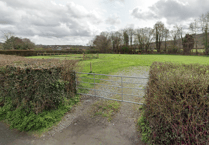A PIONEERING approach to tree planting will be used on Dartmoor to boost flood resilience and restore nature, the Dartmoor National Park Authority (DNPA) has said.
Known as the Miyawaki Method, named after its developer, Japanese botanist Dr Akira Miyawaki, the tree planting involves native trees being planted in small plots.
Around 8.5 hectares of native trees will be planted in small plots within a carefully selected area of Harford Moor.
The planting will help to reconnect existing woodlands, so nature can thrive and habitats become more resilient to the impacts of climate change, the DNPA says.
Widely used in other countries, the use of the Miyawaki Method on Dartmoor is thought to be one of the first upland trials of this kind in Europe for the purpose of improving flood resilience.
Native Devon trees including oak, downy birch, hawthorn and willow will be planted in small plots across the site.
The plots will have different densities of native trees, with some plots fenced off to exclude livestock.
Richard Drysdale, Dartmoor National Park Authority’s Director for Conservation and Communities, said: ‘This project is a great demonstration of how we work together and use bold approaches for Dartmoor’s continued protection.
‘This trial has many benefits for habitat creation, woodland connectivity, climate and flood resilience, commoning and grazing practices – it’s a long list and we’re very excited to be involved.’
Dartmoor National Park Authority is leading the work through its Headwaters project, a natural flood management programme funded by the Environment Agency and Devon County Council.
Phil Metcalfe, the Environment Agency’s Project Manager for Dartmoor Headwaters, said: ‘Thanks to the support from all those involved, tree planting on Harford Moor offers a great opportunity for both improving flood resilience to communities downstream and creation of vital habitat.
‘We’re excited to better understand how density of tree planting can improve growth rates for flood risk benefits in our upland environments and how this learning could influence planting techniques elsewhere on the moor.’





Comments
This article has no comments yet. Be the first to leave a comment.